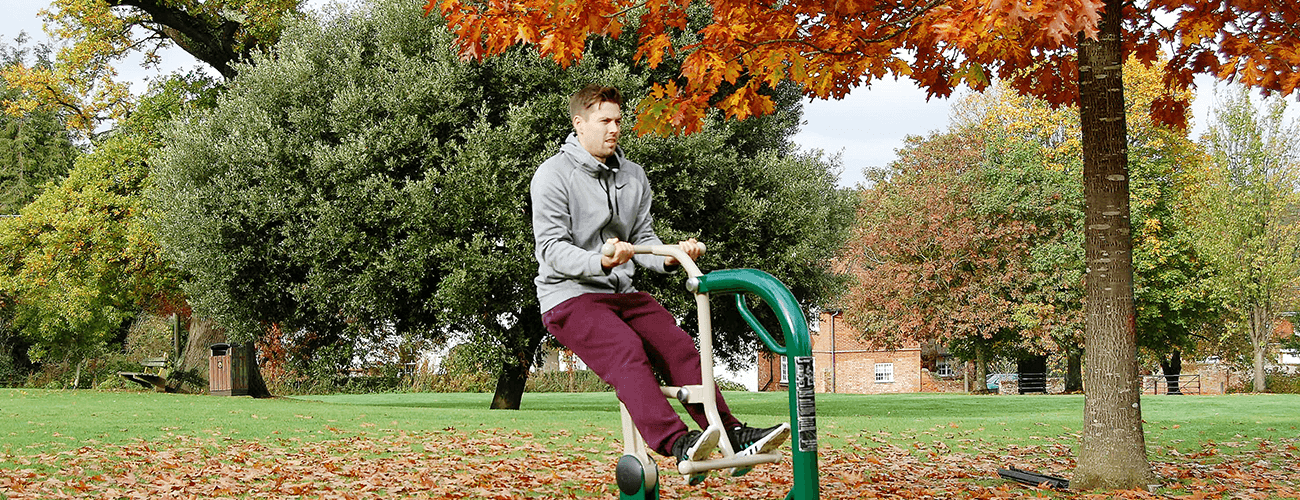
Strictly is in full swing, the clocks have gone back, Halloween and Bonfire Night have been and gone, and we’ve all been adjusting to the darker evenings and chillier weather. With the long winter months ahead, you may also have to rethink your approach to working out and exercising during these cooler months.
Here, we offer our tops tips on winter training so you can continue feeling all the benefits of an outside workout, from enhanced mood and reduced stress to increased serotonin levels.
15th November 2023
1. Change your workout gear
Even though it’s a lot chillier outside these days, you don’t want to overheat. Think in terms of technical fabrics and thin layers you can remove or put on as necessary. Thermals will provide additional warmth when you most need it, especially when worn as base layers.
It’s important that you dress for the wet as well as the cold – getting drenched is worse when it’s cooler outside, since liquid can shift the heat away from your body. Shower-proof coats offer protection against a wintry downpour, sleet or hail. Materials like cotton absorb moisture, while synthetic fibres such as polyester and nylon wick away sweat and rain.
Finally, don’t forget the right accessories, from hats and gloves to scarves – get ones which are specifically designed for movement. Cover up extremities like hands and ears. A headtorch may also be worth having, while bright colours will mean motorists and others see you in the dusk or dark.
2. Don’t forget to drink
It’s true that you won’t overheat as much in chillier weather. But you still need to hydrate in cold conditions, just as much as you do in warmer weather. Heavy clothes can increase sweating, thirst mechanisms may not be as effective, and colds and flu, which worsen the risks of dehydration, are more common in winter. Turn up for training having already hydrated and top yourself up regularly while exercising.
3. Stretch yourself
Stretching increases flexibility and range of motion, while reducing the risk of injury. Its importance increases when it’s cold, since muscles contract to preserve heat, so they become tighter and more vulnerable to injuries such as sprains if you’re not careful. Spend a little more time than you would normally on stretches and warming up/cooling down before and after your winter outdoor workout. Incorporate low-intensity movements which mimic the exercises you are about to do.
4. Throw in the towel …
… into your gym bag. You’ll still sweat. Equally, it’s a good idea to take a spare in case you need to give the equipment a quick wipe-down.
5. Protect your skin
Bear in mind that in winter the air is both dry and cold. Stop your skin from drying out by staying hydrated and moisturising. You could also try putting Vaseline on spots such as the tip of your nose, nostrils and ears, and you may want to cover your face with a running mask or scarf.
Another thing to understand is that you can still get sunburnt in winter. Even on a cloudy day, UV rays can still damage the skin. What’s more, the Skin Cancer Foundation reports that snow reflects up to 80% of UV rays. So if it’s sunny, UV-blocking sunglasses, lip balm and SPF 30 sunscreen are all well worth considering.
6. Breathe properly
You may not think you need to learn how to breathe. But it can become painful in cold, dry air, in which airways can constrict. Breathing in through your nose can help, as can having thin layer of fabric such as a bandanna around your mouth. This helps trap vapour as you breathe out, keeping air moister as you continue to breathe.
7. Know when not to go out
Some conditions are perhaps best avoided altogether. Severe ice, for example, could mean you slip and hurt yourself, while extreme cold can cause frostbite and tissue damage. Meanwhile, hypothermia in which the body puts out heat more rapidly than it can produce it, is another potential risk, albeit a small one. And lower temperatures can cause blood vessels to narrow.
Equally, cold can aggravate certain medical conditions, including asthma, heart problems and Raynaud’s disease.
So in torrential rain, or if temperatures slip below freezing, you may want to consider changing up your rest day and fitting in an outdoor session once the weather improves.
Talk to us
At Fresh Air Fitness, we supply outdoor gym equipment to a range of clients UK-wide, designed for safe year-round use and with long warranties. Get in touch today about how our equipment could help transform health and enjoyment of exercise among your community, whether you run a school, council, park, recreation ground, residential home or anything else.
Back to all blog posts